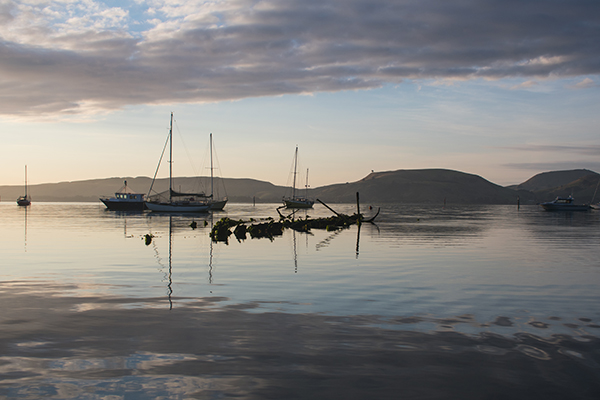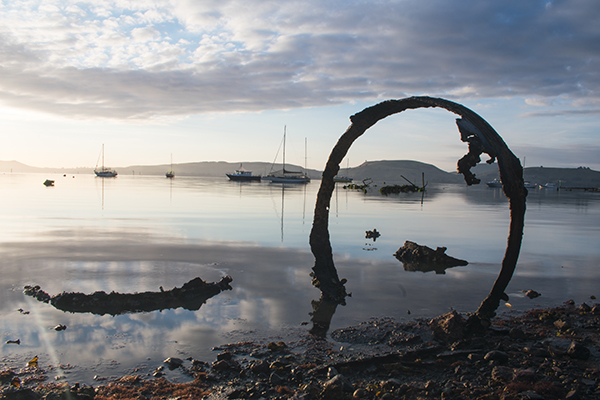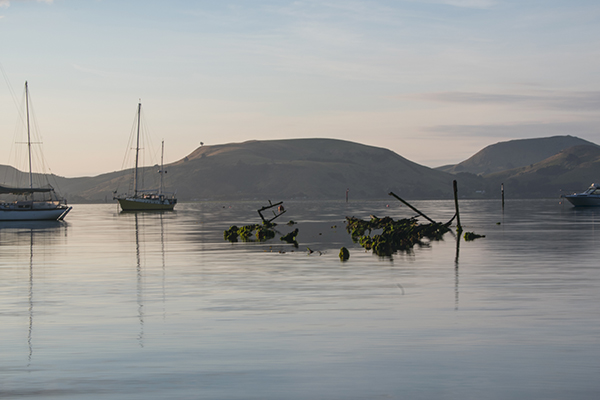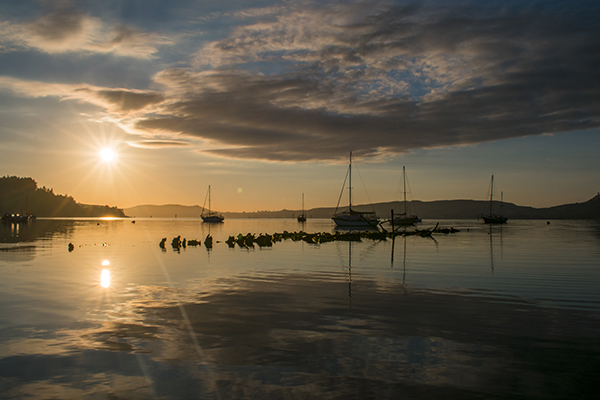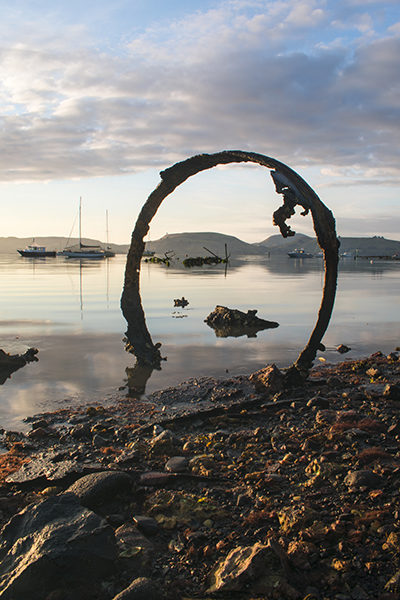The Don Juan pirate ship in Deborah Bay
Not far from the heart of Dunedin lies an old pirate ship hidden at high tide, and its hull revealed at low tide. This ship was launched in Sweden in 1857, and since that day it has had four official names given to it and its stories are countless. It spent some time down in South America and vanished off the records for a good eight years -- piracy and Spanish slavery are speculated. It is known thereafter that the ship spent some time in the guano trade and possibly participated in 'Blackbirding' over the Pacific. Read through some of the provided links for a better idea of what that is and what else the ship got up to.
Directions
From Dunedin, drive North through Port Chalmers, past Careys Bay, and at low tide you'll spot its skeletal hull before the boat jetty in Deborah Bay. I would recommend some gumboots to get the closest look without having to go for a swim. The little rocky beach before the water is littered with glass, fyi.

